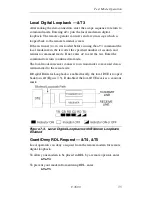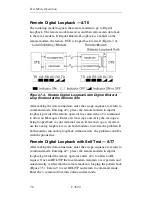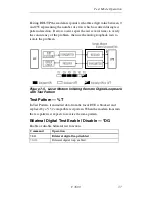
Security
V.3600
8-11
Display User Status — $S?
Enter the
$S?
command to indicate whether or not the current user has
superuser status.
The V.3600 responds with one of the following responses:
SUPERUSER STATUS
NORMAL STATUS
Verify User Information — $In, $IBn
Security level and callback number can be displayed using either the
$In
or
$IBn
command. To display the assigned security level and
callback number for a single user enter
AT$In
where
n
is the user number. A regular user can only check his own
information. A user with superuser privileges can check any user's
information.
A user with superuser privileges can also display the assigned security
level and callback number for each valid user within a block of ten
consecutive user numbers by entering:
AT$IBn
where
n
is the first user number.
Request Superuser Privilege — $S=pw
Once logged on as a user, superuser privilege can be requested by
entering the
$S=pw
command, where
pw
is the superuser password.
When the correct password has been entered, the V.3600 responds with
SUPERUSER STATUS
OK
Local Logon Command — $n=pw
Enter the
$n=pw
command to logon locally to the secure V.3600 where
n
is the user number and pw is the password.
Local Logoff Command — $$
To logoff after a local session enter
AT$$
Summary of Contents for V.3600 Series
Page 3: ...Copyright V 3600 iii...
Page 9: ......
Page 10: ...x V 3600 Regulatory Information...
Page 20: ...Contents continued xx V 3600 Appendix I Country Specific Parameters Service and Support...
Page 29: ...Installation V 3600 2 3 Figure 2 2 Digital Interface Signals...
Page 36: ......
Page 42: ......
Page 54: ......
Page 100: ......
Page 112: ......
Page 194: ......
Page 196: ......
Page 204: ......
Page 236: ......
Page 258: ......
















































